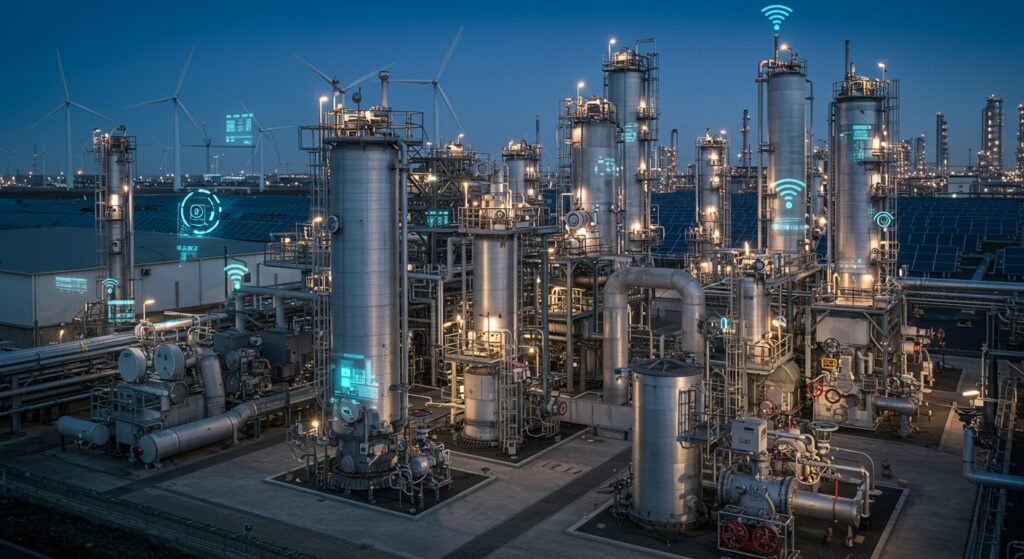In today’s competitive industrial landscape, maximizing operational efficiency is paramount. One of the most impactful strategies for achieving this is robust energy management. By strategically monitoring, analyzing, and optimizing energy consumption, industries can unlock significant cost savings, reduce their environmental footprint, and enhance overall productivity. This comprehensive guide will explore the critical role of energy Management Systems (EMS) in driving industrial efficiency and fostering sustainable operations.
Table of Contents
- What Are Energy Management Systems (EMS)?
- The Unbeatable Benefits of Effective Energy Management
- Implementing Energy Management in Industry: A Step-by-Step Guide
- Case Studies: Real-World Industrial Efficiency Gains
- Challenges and Solutions in Energy Management Adoption
- Conclusion
What Are Energy Management Systems (EMS)?
An Energy Management System (EMS) is a framework of tools and processes designed to monitor, control, and optimize energy consumption within an organization. It encompasses everything from data collection and analysis to implementing energy-saving measures and continuous improvement. For industrial settings, an EMS typically involves sophisticated hardware like smart meters and sensors, coupled with software platforms that provide real-time insights into energy usage across various processes and equipment. The ultimate goal is to identify areas of inefficiency and implement targeted strategies for energy optimization, leading directly to improved industrial efficiency.
Key Components of an EMS
- Data Acquisition: Smart meters and sensors collect real-time data on electricity, gas, water, and other utilities.
- Data Analysis Software: Platforms that process raw data into actionable insights, identifying consumption patterns, peaks, and anomalies.
- Control Systems: Automated systems that can adjust equipment operation based on energy data and predefined rules.
- Reporting and Visualization: Dashboards and reports that provide a clear overview of energy performance and savings.
- Personnel Training: Educating staff on energy-efficient practices and the proper use of EMS tools.
The Unbeatable Benefits of Effective Energy Management
Adopting a proactive approach to energy management yields a multitude of advantages that go beyond simple cost reduction, though that remains a primary driver for many industries.
Cost Savings
The most immediate and tangible benefit is the reduction in operating expenses. By identifying and eliminating energy waste, industries can significantly lower utility bills. This includes optimizing equipment schedules, reducing peak demand charges, and improving the energy efficiency of machinery. The savings can be substantial, directly impacting the bottom line and freeing up capital for other investments.
Environmental Impact and Sustainability
Effective energy management is a cornerstone of sustainable operations. By consuming less energy, businesses reduce their carbon footprint and contribute to mitigating climate change. This not only aligns with corporate social responsibility goals but also appeals to an increasingly environmentally conscious customer base and can help meet regulatory compliance standards. Reducing reliance on non-renewable energy sources is a critical long-term objective.
Enhanced Operational Reliability
Understanding and managing energy flow better can also lead to more reliable operations. By continuously monitoring systems, potential equipment failures due to inefficient energy use can be identified early. Furthermore, an optimized energy infrastructure is less prone to overloads and disruptions, ensuring smoother production processes. This proactive maintenance approach enhances the longevity of assets and reduces downtime.
Implementing Energy Management in Industry: A Step-by-Step Guide
Successfully integrating an EMS requires a structured approach. Here’s a general outline for industries looking to enhance their industrial efficiency through better energy practices.
Assessment and Auditing
The first step involves a thorough energy audit to establish a baseline of current energy consumption. This includes analyzing historical data, identifying major energy consumers, and pinpointing areas of waste. Professional energy auditors can provide invaluable insights and recommendations tailored to specific industrial processes. Understanding where energy is used most—and least—efficiently is crucial for targeted improvements.
Technology Integration (Monitoring, Control, Automation)
Deploying appropriate monitoring systems, sensors, and smart controls is essential. These technologies provide the data necessary for informed decision-making. Automation tools can then be implemented to optimize processes, such as adjusting HVAC systems based on occupancy or turning off machinery during idle periods. Integration with existing SCADA or MES systems can further enhance data synergy.
Employee Engagement and Training
Technology alone is not enough. Employee awareness and participation are vital for the long-term success of any energy management program. Training programs should educate staff on energy-saving practices, the importance of their role, and how to utilize EMS tools effectively. Fostering a culture of energy conservation ensures that efforts are sustained and continually improved.
Case Studies: Real-World Industrial Efficiency Gains
Numerous companies have demonstrated remarkable success by implementing comprehensive energy management strategies. These examples highlight the tangible benefits of investing in smart energy solutions.
| Industry Sector | Initial Challenge | EMS Solution Implemented | Achieved Savings/Improvement |
|---|---|---|---|
| Automotive Manufacturing | High electricity consumption from machinery & lighting | Real-time monitoring, LED lighting upgrade, automated shutdown protocols | 15% reduction in electricity bills, 10% lower carbon emissions |
| Chemical Processing | Inefficient HVAC & pump operation | Variable Frequency Drives (VFDs) on pumps, optimized HVAC controls | 20% energy cost reduction, improved equipment lifespan |
| Food & Beverage | Significant refrigeration & boiler energy use | Waste heat recovery, smart refrigeration controls, leak detection | 18% overall energy savings, enhanced product quality through stable temperatures |
For more examples of successful implementations, you might want to visit the U.S. Energy Information Administration website, which provides extensive data and case studies on energy trends and efficiency improvements across various sectors.
Challenges and Solutions in Energy Management Adoption
While the benefits are clear, adopting an EMS can present challenges, including initial investment costs, complexity of integration, and resistance to change. However, these can be overcome through careful planning, phased implementation, and demonstrating a clear return on investment. Government incentives and financing options can also mitigate upfront costs. Engaging stakeholders early and showcasing pilot project successes can build momentum.
Conclusion
Effective energy management is no longer just an option but a strategic imperative for industries aiming for long-term sustainability and profitability. By embracing advanced monitoring systems, optimizing operations, and fostering an energy-conscious culture, businesses can achieve substantial cost reductions, meet environmental targets, and secure a competitive edge. The journey to superior industrial efficiency begins with a commitment to smart energy practices. Learn more about sustainable manufacturing practices and how they integrate with energy efficiency.


